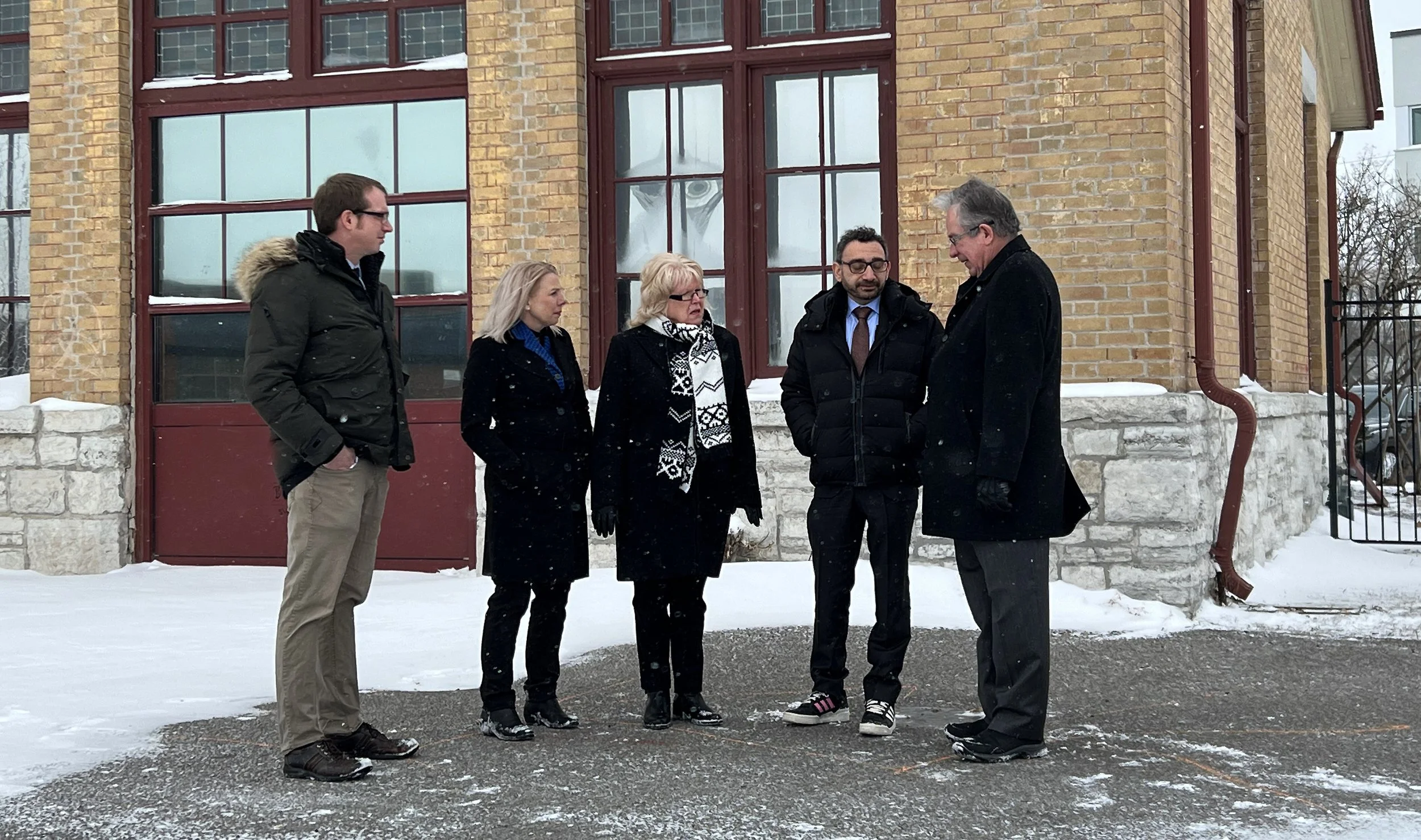Getting here didn’t happen easily or quickly and we are still years away from having shovels in the ground.
Our Chamber of Commerce has been a fierce advocate for its return for well over a decade. Our Chamber has been integral in the process, including funding the creation of the Shining Waters Railway Corporation. Our team, both staff and volunteer board and committee members, have put many years into researching and developing the business case behind the proposal and laying out the logistical hurdles we would need to jump to get there. People like Dick Crawford, Jim Hill, Stuart Harrison and the late Tony Smith worked tirelessly with our leadership over the years, including former MPs Maryam Monsef and Dean Del Mastro, former MPP Jeff Leal, and former Mayors Darryl Bennett and Diane Therrien.
The original plan was to connect the Peterborough area to Toronto with a line terminating at the rail yard in Havelock. That all changed in 2016 when VIA Rail entered the conversation, proposing High Frequency Rail (HFR) not just to Toronto, but to Ottawa as well. That proposal would grow to include Montreal, Trois-Rivières, and Quebec City.
On Thursday, Minister of Transport Omar Alghabra came to the Peterborough and the Kawarthas Chamber of Commerce office to announce the next phase of development — beginning the Request for Qualifications (RFQ) process.
As per Transport Canada: The purpose of the RFQ is to identify and qualify up to three top candidates who will be invited to participate in the Request for Proposals (RFP) process, anticipated to begin in summer 2023. The procurement process will help select a private developer partner to work in collaboration with VIA HFR, the newly created subsidiary of VIA Rail, to design and develop the High Frequency Rail project.
And:
The High Frequency Rail procurement process is designed to encourage innovation, provide flexibility, and identify the optimal solution for the project. Therefore, RFQ respondents will have the flexibility to consider alternatives to meet or exceed the project results described in the Request for Qualifications. This would include opportunities to increase speeds beyond 200 kilometers per hour on some segments of the High Frequency Rail project, if it is cost effective to do so.
As Minister Alghabra stated, this is the largest infrastructure project. It will cost billions of dollars to build and it will take years before trains arrive.
Progress on this portfolio is exciting and the enthusiasm surrounding it is contagious.
However, announcements on this subject also elicit skepticism. The return of passenger rail service to Peterborough has been generating headlines for the last 15 years. There have been overly optimistic projections on when rail service would return. People are understandably a bit frustrated that it hasn’t happened yet and a little disillusioned as to whether it will happen at all.
What is missing from that narrative is that the champions of this project essentially spent a decade drumming up interest in connecting passenger rail to Peterborough and seeking out willing partners within the rail industry and within our government. It took years of research, planning and meeting with industry players to get this to the point where the industry would take over and lead it. This is exactly what happened when VIA Rail jumped in back in 2016.
We now have willing partners with VIA Rail and VIA HFR driving the train with the support and endorsement of municipal, provincial and federal government leaders across Ontario and Quebec. This project going forward is bigger in scope and service than what we started out with. We are focusing on mostly electric trains that will even further minimize our carbon footprint. We are looking into the merits of making sections high-speed, taking passengers at speeds beyond 200 km/h. This project will provide frequent service to communities from Toronto to Quebec City on a reliable schedule that dedicated passenger tracks afford. Travel time between Ottawa and Toronto may be as low as 3 hours and 15 minutes.
This project is now far bigger than a commute from Peterborough to Toronto — it’s going to serve 19 million people in Canada’s most densely populated corridor. It will dramatically reduce carbon emissions, cutting 12.5 Million tons of tCO2e, the equivalent of a car-pool reduction of 2.8 million vehicles.
We’re moving forward and it’s exciting!


